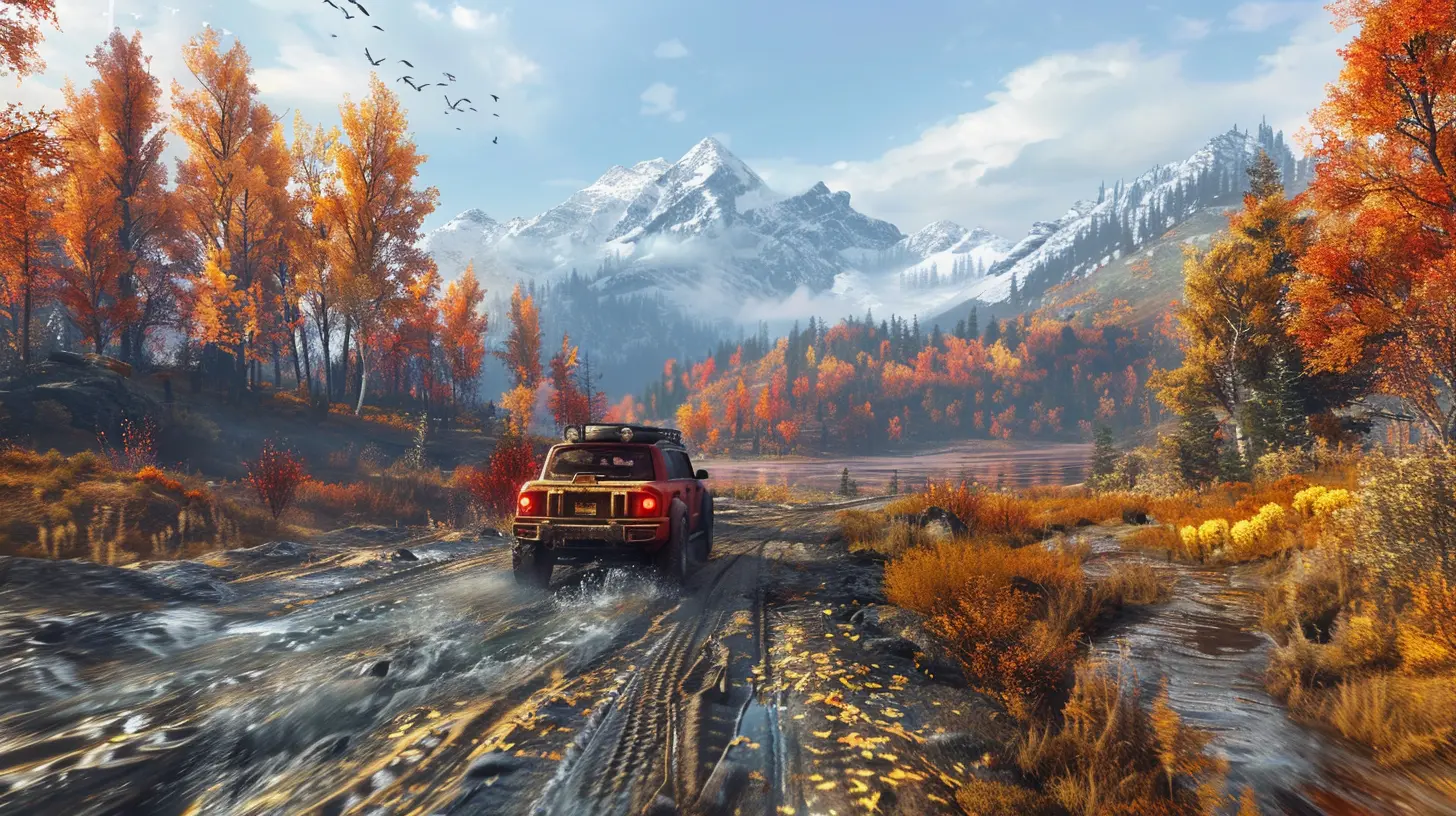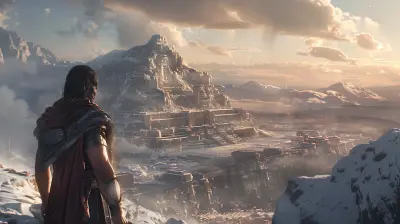How Season Passes Drive Post-Launch Content in AAA Games
15 July 2025
Let’s be honest here: gaming isn’t just about popping a disc into your console and playing until the credits roll anymore. Gone are the days when you’d finish a game, toss it on the shelf, and never look back. These days, developers have figured out something genius — and sneaky: keep the game alive after launch. One of their secret weapons? Season passes.
If you’ve been gaming for a while, you’ve probably heard the term “season pass” buzzing around. Whether you love them or roll your eyes every time you hear about them, one thing’s for sure — in the world of AAA games, season passes are a big deal. But how do they work, and why have they become such a staple of the gaming world? Buckle up because we’re diving deep into how season passes drive post-launch content in AAA games, one DLC drop at a time.
What Even Is a Season Pass?
Before we get too far, let's break it down. What is a season pass, anyway? No, it’s not like a VIP pass to an amusement park (though sometimes it feels like one). In gaming terms, a season pass is basically a one-time purchase that gives you access to a bundle of post-launch content. Think of it as a backstage pass to all the cool stuff the developers have been working on after the base game hits shelves.In most cases, a season pass includes extra levels, new characters, skins, weapons, or even full-blown story expansions. It’s like getting dessert after the main course — you’re already full, but hey, who’s going to say no to chocolate cake? 
Why Season Passes Are Big in AAA Games
AAA games (the Hollywood blockbusters of gaming) aren’t just about making a splash at launch anymore. Gone are the days when developers could pump out a game and call it a day. Now, it’s all about staying relevant long after the initial hype dies down. Enter the season pass.Here’s the deal: AAA games are expensive to make — we’re talking millions (sometimes hundreds of millions) in development costs. But once the game’s out there, developers aren’t exactly rolling in cash unless they’ve got something more to sell. That’s where season passes swoop in like a knight in shining armor. By offering a steady stream of extra content, they keep players hooked (and wallets open) for months, sometimes even years, after launch.
The Financial Side of Things
Let’s get real for a second. From a business standpoint, season passes are the gift that keeps on giving. It’s like having a subscription service without calling it a subscription. Instead of just getting money from people when they buy the game, the devs can rake in extra revenue with every season pass sold.And who can blame them? We’re all guilty of splurging on something we didn’t really need because it felt like a good deal. “$30 for all this extra content? Take my money!” (Cue regret later when you barely touch half the DLC.)
Keeping Players Coming Back
In the era of online multiplayer and live service games, keeping players engaged is everything. A season pass is like a dangling carrot, giving us players a reason to log back in even months after we thought we’d moved on. Whether it's new maps in a shooter, new story chapters in an RPG, or even seasonal cosmetic items, that fresh content keeps things from going stale.Think of it like gaming FOMO (fear of missing out). You don’t want to be the one person in your squad who hasn’t tried out the sweet new weapon or explored the latest DLC map, do you? Of course not. And that’s exactly what makes season passes so effective.
The Different Flavors of Season Passes
Ready for a plot twist? Not all season passes are created equal. Developers love to spice things up, so season passes come in different flavors to suit different audiences. Let’s break them down.1. The "Classic" Season Pass
This is your OG, no-frills season pass. You pay a flat fee upfront and get access to all the content the devs release post-launch. For example, games like The Witcher 3 and Dark Souls III have done this beautifully, offering players hefty expansions that feel worth every penny.It’s basically like pre-ordering all the DLC in one shot. On the plus side, it’s usually cheaper than buying everything à la carte. On the downside? You’re rolling the dice on whether the content will actually be good (cough, Anthem, cough).
2. The "Live Service" Approach
If you’re into games like Fortnite, Apex Legends, or Call of Duty: Warzone, you’re familiar with this model. Instead of giving you all the DLC in one go, these games use a rotating “seasonal” structure. Each season brings new content — think skins, challenges, and maybe even events — and you buy into it with a battle pass.This version is basically the gift shop of gaming. You’re not forced to buy anything, but good luck resisting that shiny new skin everyone else is rocking in the lobby.
3. Hybrid Models
Some games are like, “Why stop at one model when we can mix them all together?” Games like Assassin’s Creed: Valhalla and Destiny 2 combine years-long passes with seasonal offerings. So, not only are you buying a season pass for the long haul, but you’re also tempted to dip into shorter seasonal bundles. It’s like ordering a sampler platter at a restaurant — everything looks too good to pass up.
What Makes a Good Season Pass?
Okay, so not all season passes are winners. Some are just glorified cash grabs that leave you feeling ripped off. So what makes a good season pass? Here are the key ingredients:1. Value for Money: Nobody wants to pay for a season pass that only gives them a couple of lame skins. If you’re shelling out cash, you want meaty expansions and worthwhile extras.
2. Consistent Updates: A season pass is only as good as the content it delivers. Sporadic or delayed updates are a recipe for disappointment.
3. Surprises: Throwing in unexpected bonuses can turn a good season pass into a great one. Who doesn’t love getting something they didn’t know was coming?
4. Community Engagement: The best season passes keep players talking. Bonus points if the devs actually listen to feedback and tweak future content accordingly.
Do Gamers Actually Like Season Passes?
Ah, the million-dollar question. Do we gamers actually like season passes, or do we tolerate them because we have no choice? Honestly, it’s a mixed bag.On one hand, season passes can feel predatory. Nobody likes the feeling of being nickel-and-dimed for content that probably should’ve shipped with the base game. But at the same time, they can add a ton of value if done right. When developers put effort into creating high-quality post-launch content, a season pass feels more like a thank-you gift than a cash grab.
The Future of Season Passes
So, where do we go from here? Well, the gaming landscape is constantly evolving. As more players flock to live service games and subscription models like Xbox Game Pass, traditional season passes might look a little different in the future.Some companies might double down on smaller, more frequent updates. Others might bundle season passes into all-access subscriptions. Either way, one thing’s for sure: post-launch content isn’t going anywhere anytime soon. And honestly? As long as it’s well-done and fairly priced, I don’t think anybody’s complaining.
Wrapping It Up
Season passes have transformed the way we play (and pay for) AAA games. Whether you’re all-in on your favorite game’s latest DLC or shaking your fist at yet another battle pass to buy, you can’t deny the impact they’ve had on keeping games alive and thriving long after launch day.Love them or hate them, season passes are here to stay. So next time your favorite game announces one, ask yourself this: Do I really need it, or am I just here for the FOMO? (Spoiler alert: If it sounds like a good deal, you’re probably buying it anyway.
all images in this post were generated using AI tools
Category:
Season PassesAuthor:

Leandro Banks
Discussion
rate this article
2 comments
Isaiah Elliott
Unlocking endless gaming adventures!
September 30, 2025 at 3:00 PM

Leandro Banks
Thank you! Season passes indeed enhance player experiences by providing ongoing content and adventures.
Sabina Morales
Great insights! Season passes can effectively extend a game's lifespan, but balancing content quality and player engagement is crucial. Looking forward to seeing how developers innovate in future releases!
July 19, 2025 at 4:41 AM

Leandro Banks
Thank you! You're absolutely right—striking the right balance between content quality and player engagement is key for successful season passes. Exciting innovations await!


